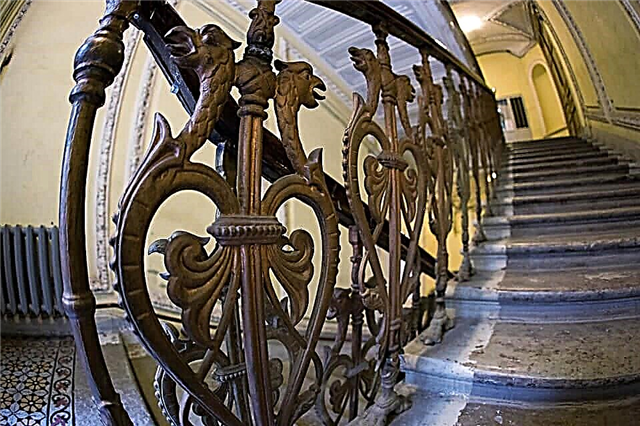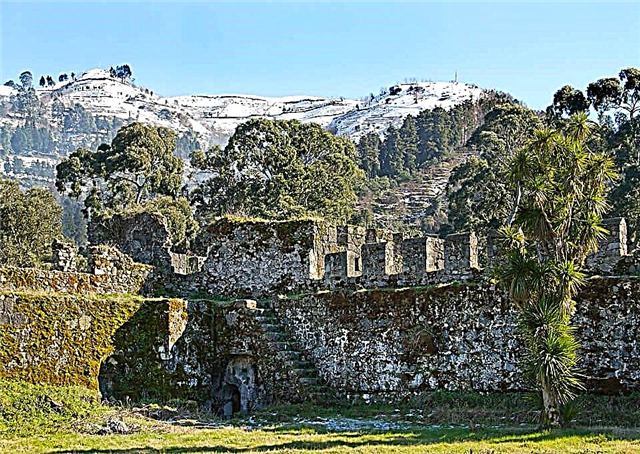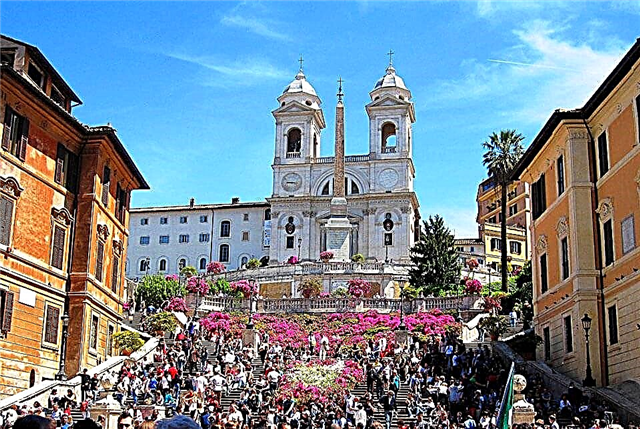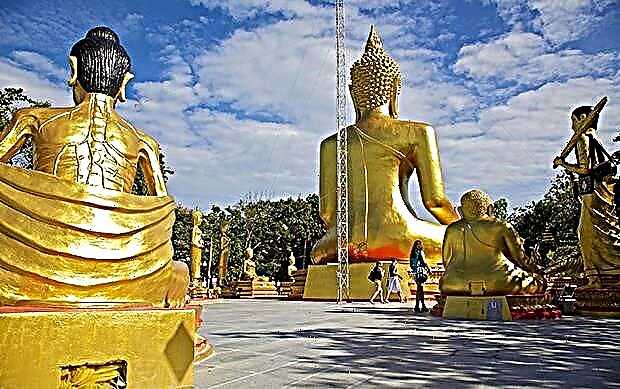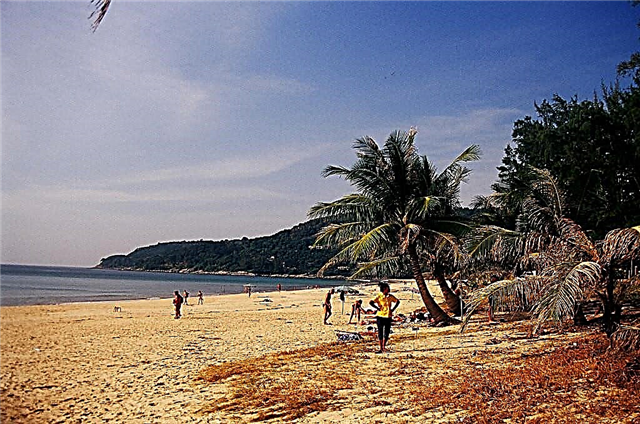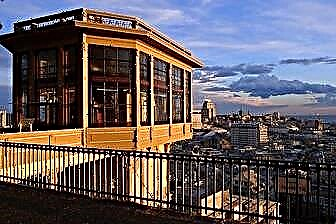Genoa is the largest northern port in Italy and the center of resort life on the Ligurian coast. Already from the X-XI centuries. The Republic of Genoa held in its hands the best sea routes of the Mediterranean, while squeezing out even the mighty Venice.
The famous Christopher Columbus, a navigator, explorer and discoverer of the American continent, was born in Genoa. You can see his house with your own eyes on one of the city streets. The incomparable Italian composer Giuseppe Verdi spent a lot of time in the capital of Liguria. Once upon a time, his operas made the local musical theater famous.
Genoa is a place where a good beach holiday can be combined with active excursions and long health walks in nature. You need to come to the Ligurian coast for a magnificent climate, ancient architecture and a leisurely passage of time.

The best hotels and hotels at affordable prices.
from 500 rubles / day
What to see and where to go in Genoa?
The most interesting and beautiful places for walking. Photos and a short description.
Piazza Ferrari
The central square of Genoa, located on the border of the historic and business quarters. Many city attractions are located here - palaces, theaters, monuments, administrative buildings. Piazza is often the venue for public demonstrations, concerts and other events. The square is named after Duke R. de Ferrari, a famous city patron of the arts.

Old port of Genoa
For centuries, the busy Genoese harbor was moored by ships laden with spices, outlandish goods from distant lands and slaves. Over time, the port fell into disrepair, but local enthusiasts found use for it. According to the project of the architect R. Päno, for the 500th anniversary of the discovery of America, the old harbor was converted into an entertainment complex. A museum, a tropical garden, a swimming pool, and a panoramic elevator appeared on its territory.

La Lanterna
One of the oldest lighthouses in the world, located in the port of Genoa. The tower is believed to have been built in the 12th century. Over the following years, the lighthouse increased in size, in the XIV century, a prison was organized inside. A building reconstructed in the 16th century has survived to this day. The maintenance of the lighthouse was paid from the tax paid by ships moored in the city port.

Baccadass
A picturesque area along the Corso Italia promenade. There are several good beaches on the territory of Baccadasse, which attracts increased attention of tourists. Cape Santa Chiara with a stylized medieval castle is also located here. In the past centuries, mostly fishermen settled in local houses. The area is distinguished by narrow stone streets, brightly colored facades and stunning views from the waterfront.

Nerves
A small resort town located near Genoa. Administratively, it is considered part of the urban agglomeration of Genoa. Previously, Nervi was an ordinary fishing village, now it is built up with villas and apartments for tourists, although fishermen still continue to go out to sea. The town has several interesting museums where you can learn a lot about the history and culture of Liguria.
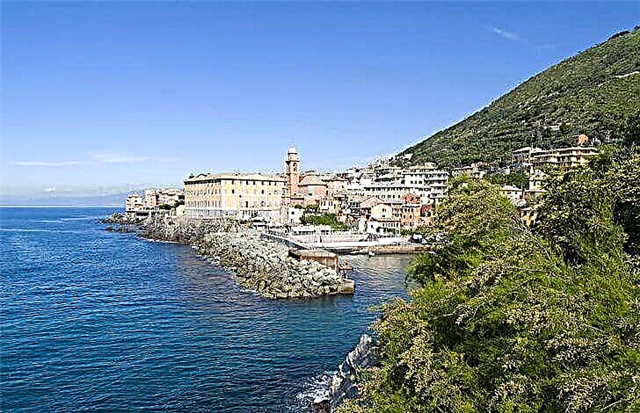
Palazzi dei Rolli
A quarter built up with palaces of the Genoese nobility. More than half of the buildings after restoration were included in the UNESCO World Heritage List. On the territory of Palazzo Tursi, Palazzo Bianco and Palazzo Rosso, you can see rich collections of antique furniture, priceless paintings, tapestries and sculptures. These palaces are located on Garibaldi Street - the central alley of the quarter. The street was named after the revered Italian revolutionary and hero.

Palazzo Bianco
The palace-museum, which is part of the Strada Nuova museum complex. The building was built in the 16th century by order of the influential Genoese Grimaldi family. Subsequently, the palazzo changed its owners several times. At the beginning of the 18th century, the new owners, the Brigondi family, carried out a thorough reconstruction. Since then, the palace has received the unofficial name "Palazzo Bianco" due to the white color prevailing in the interior. At the beginning of the 20th century, the building was transferred to the state.

Palazzo Rosso
The red palace, erected in the 17th century by the project of the architect P.A. Corradi. In 2006, the building was listed as a UNESCO Historical Heritage Site. The palazzo was privately owned until 1874, then it was donated to the city. Along with Palazzo Bianco and Palazzo Tursi, the palace is part of the museum complex on Via Garibaldi. The interior houses a collection of works of art that once belonged to the Brignole-Sale family, the former owners of the palazzo.

Palazzo Ducale
Former palace of the Doges - rulers of Genoa, which was built and completed in the period 1251-1539. Today, the building houses a museum. Also, some of the premises are used for cultural and social events. At the end of the 18th century, the palazzo was rebuilt taking into account the fashionable trends of the neoclassical style at that time. The last restoration was carried out in 1992 to celebrate the 500th anniversary of the discovery of America.

Palazzo San Giorgio
A 12th century palace built by a close relative of the first Genoese doge. Interestingly, the wreckage of the Venetian embassy, which was brought from Constantinople, was used as a building material. At a certain period, the palazzo began to be used as a prison. The most famous prisoner of this dungeon was the traveler Marco Polo. In the 15th century, the building housed a bank. Today, the palace houses the Genoese Port Authority.

Royal Palace
The 17th century palace, preserved in its original form, despite several restorations. It was built between 1643 and 1650. for an influential Genoese family. Since 1824, the palazzo has been used as the residence of the royal family of Savoy. The new occupants have put a lot of effort into making the interiors look luxurious. They brought a lot of expensive furniture and art objects.

Princely villa
The mansion was built in the 17th century for A. Doria, the naval admiral and ruler of the city. At that time, the palace was the most luxurious building in Genoa. It hosted important guests, official delegations and foreign ambassadors. Over time, A. Doria was granted the princely title, so the residence was renamed "Princely Villa". The building is surrounded by a landscaped garden, which houses a large fountain from 1585.

Albertis Castle
The castle was built in the 19th century on the site of the old fortress walls of Genoa. Until 1932, it belonged to E.A. D'Albertis - sea captain and founder of yachting in Italy. The building was erected in the neo-gothic style according to the project of A. D'Andrade. In 2004, Genoa was selected as the European Capital of Culture. In connection with this event, the Museum of World Cultures was opened on the territory of the castle, which contains exhibits obtained during expeditions to Africa, Australia and Oceania, America.

Cathedral of San Lorenzo
The main cathedral of Genoa, erected in the XII century on the site of the old church of the V-VI centuries. Even earlier, at the dawn of our era, there was an ancient Roman temple and an early Christian cemetery, as evidenced by objects found during excavations. The construction of the cathedral was fully completed by the 17th century, during which time it underwent several extensions and reconstructions. There is a Treasure Museum near the cathedral, which houses jewelry made in the period from the 9th century.

Church of Santa Maria di Castello
One of the oldest temples in Genoa, which was built in the 9th-10th centuries. In the XIV-XV centuries.a monastery was added to the church. By the 20th century, the monastery fell into decay. Now it houses a museum. Santa Maria di Castello is a working church. Over the centuries, it has been rebuilt and renovated. Therefore, in its appearance, you can catch the features of baroque and classicism, superimposed on the austere Romanesque facade.

Basilica of Santissima Annunziata del Vastato
A picturesque church built in a transitional style from Mannerism to Baroque. According to the original plan, the temple was erected in the late Gothic style, but at the beginning of the 17th century, under the leadership of the architect T. Carlone, the building was rebuilt. Famous masters worked on the decoration of the church in different periods: D. Bernardo, D. Casella, K. Barabino. This was made possible thanks to generous funding from the wealthy Lomellini family.

Church of Saints Ambrose and Andrew
Jesuit temple located in one of the central city squares. The first church of the 6th century, located on this site, was named after St. Ambrose - the patron saint of Milan. It lasted until 1552. After the building fell into the hands of the Jesuits, they decided to rebuild the church to their liking. Thanks to the brothers, valuable works of art and frescoes by D. Carlone appeared in the temple.

Staglieno cemetery
The cemetery began its work in the middle of the 19th century. It quickly became the most popular in the city. The people who buried their relatives seem to have competed in the beauty of the headstones adorning graves and crypts. Now the necropolis can be considered as an open-air museum of sculpture. The philosopher F. Nietzsche, accompanied by the artist P. Klee, once liked to walk along the paths of the cemetery.

Teatro Carlo Felice
Genoa's main opera and ballet stage located in Piazza Ferrari. The theater building was erected in the first half of the 19th century. The opera Bianca and Fernando by V. Bellini was chosen as the premiere performance. The works of the great Giuseppe Verdi were often staged on the stage. The composer himself lived in Genoa every winter for 40 years. All this time he worked closely with the management of the theater.

Genoa aquarium
Aquarium of Genoa is considered the second largest in Europe and the largest aquarium in Italy. Marine life is contained in 70 huge reservoirs with a total capacity of more than 6 million tons of water. The Oceanarium was built in 1992 for the start of the Genoa Expo, which was held in honor of the 500th anniversary of the discovery of America. In 1998, the area of the aquarium was expanded with another extension.

Galata Maritime Museum
The museum was opened in 2004. The exposition tells about the rich history and traditions of navigation of the Genoese Republic, as well as the entire Mediterranean. The museum exhibits ship models from different historical eras. There are modern submarines, old boats of wealthy merchants, and warships. The museum has a library where navigational charts and ship documentation are kept.

Galleon "Neptune"
Replica of a Spanish 17th century ship, which was created in 1985 specifically for the film "Pirates" by Roman Polanski. Externally, the ship is a real Spanish galleon, completely made of wood, but it has a powerful modern engine and a steel hull. After filming, the ship docked forever near the Maritime Museum and is now used only as a tourist attraction.

Panoramic elevator "Il Bigo"
A popular tourist attraction located in the Old Port of Genoa. The elevator is stylized as a system of harbor cranes, with the help of which ships were loaded and unloaded. "Il Bigo" lifts passengers to a height of 40 meters above sea level, from where a panoramic view of the sea, the city, the harbor, the coastal cliffs and the vicinity of Genoa opens.

Porta Soprana Gate
A massive 12th century gate located in the heart of the city. For many centuries they served as the main entrance to Genoa. The structure is made of gray stone in the form of two watch towers connected by an arched span. Tourists can climb to the observation deck of the gate completely free of charge and admire the city views from there. Porta Soprana is located in the historical part of Genoa.

House of Christopher Columbus
The great navigator and discoverer Columbus was born on the territory of the Republic of Genoa. The house in which he was born still stands on one of the city streets. The building was badly damaged in the 17th century during the French attack, but the building was partially restored. During the excavations, it was found that the walls are held on the old foundation of the 6th century.

Nervi Park
Park area surrounding the town of Nervi and includes the surroundings and landscaped embankments. The main promenade of the park is a narrow strip between the rocks and the sea, which stretches for about 2 km. This is a great place for calm walks along the coast, for observing the sea elements and for relaxation. The park is very popular with tourists, so there can be many visitors here during the high season.

Villeta Di Negro Park
Large park located within the city limits of Genoa. In the 16th century, a system of fortifications stood in its place, but later there was no need for them, and the territories were given over to green spaces. The park appeared thanks to the activities of the Marquis D.C.Di Negro, who first organized a botanical school here and brought the first plants. On the territory of the garden is the Museum of Oriental Art. Chiussone.

Promenade Corso Italy
The main promenade of Genoa, stretching for about 2.5 km. along the coast. The embankment acquired its modern architectural appearance in 1915. D. Carbone worked on the project. As a result of the reconstruction, the place became more comfortable - benches, new paths, gazebos appeared. Corso Italia has restaurants, bars, swimming pools, sports clubs and private beaches.
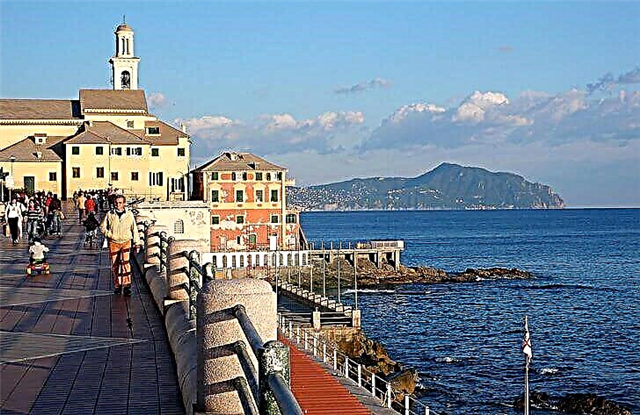
Anita Garibaldi Embankment
The main promenade of the Nevi Park, which stretches along the rocky coast. There are several places on the promenade where you can go down the stairs directly to the sea. Many tourists sunbathe and relax right on the coastal rocks. The embankment is dotted with sharp capes and rocky ledges overgrown with typical Mediterranean vegetation. This is a picturesque place perfectly suited for relaxation.

Montaldo lookout point
Montaldo is considered one of the most beautiful places in Genoa. From here, a stunning view of the city's quarters opens up. In the 13th century, the Castelletto fortress stood on the site of the square, but it was demolished in the middle of the 19th century. Monatldo can be reached using a special elevator from 1910, which is a separate attraction in itself. Alternatively, you can use the Chirkonwallacione-a-Monte road.




